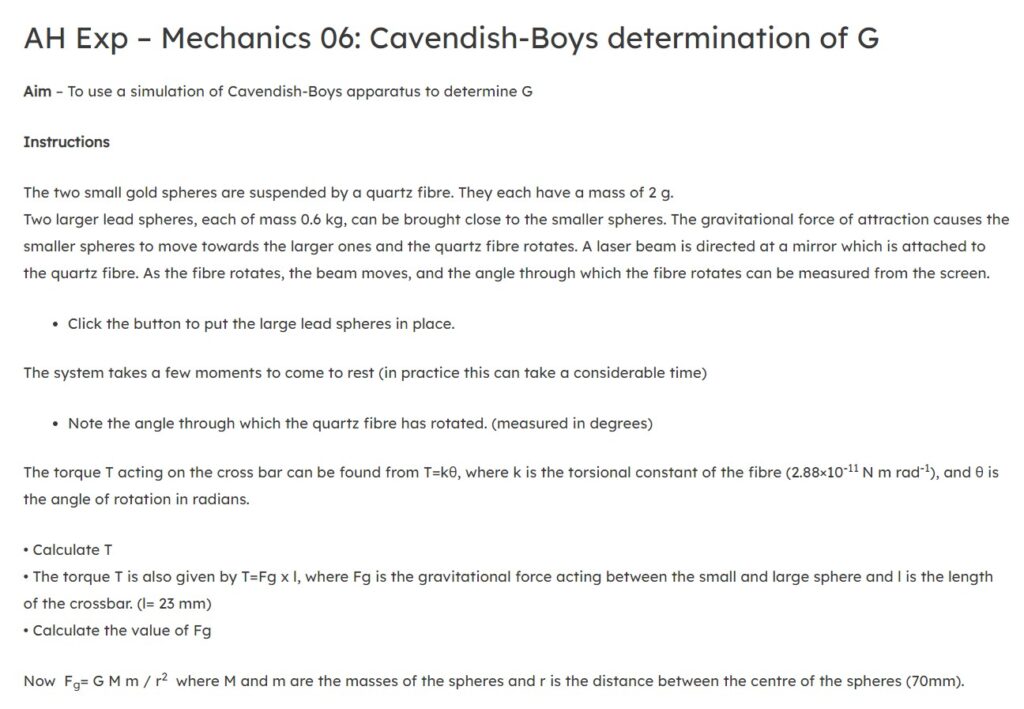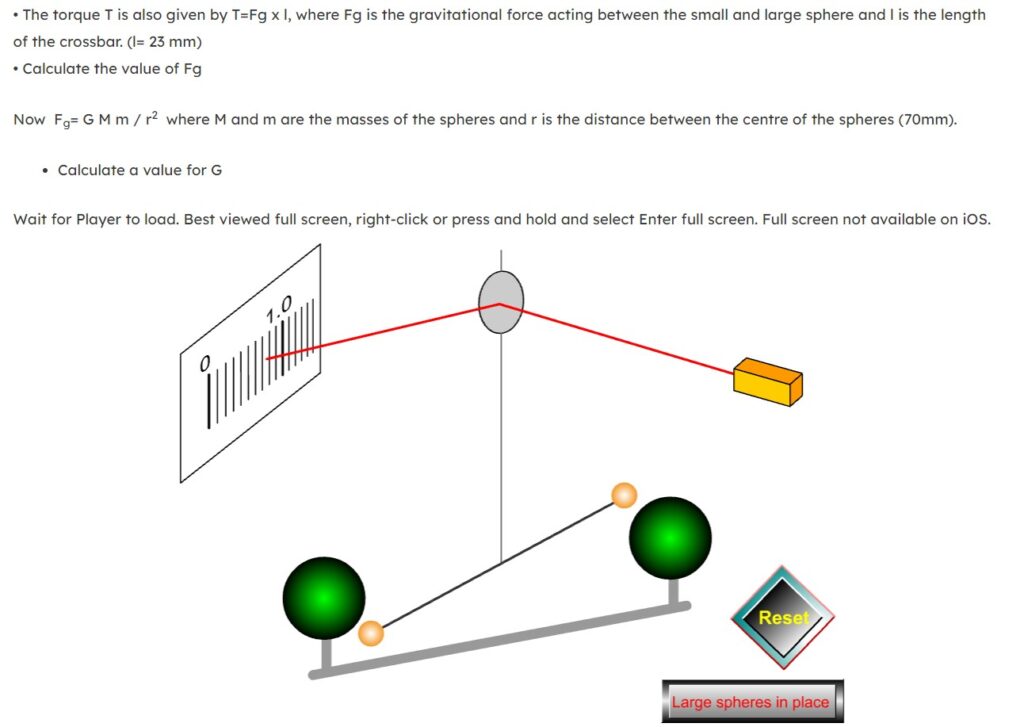G being Newton’s Universal Gravitational Constant, although a number was only put to this many years after Newton’s time.
Cavendish experiment, measurement of the force of gravitational attraction between pairs of lead spheres, which allows the calculation of the value of the gravitational constant, G. In Newton’s law of universal gravitation, the attractive force between two objects (F) is equal to G times the product of their masses (m1m2) divided by the square of the distance between them (r2); that is, F = Gm1m2/r2. The experiment was performed in 1797–98 by the English scientist Henry Cavendish. He followed a method prescribed, and used an apparatus built, by his countryman the geologist and astronomer John Michell, who had died in 1793.
https://www.britannica.com/science/Cavendish-experiment



